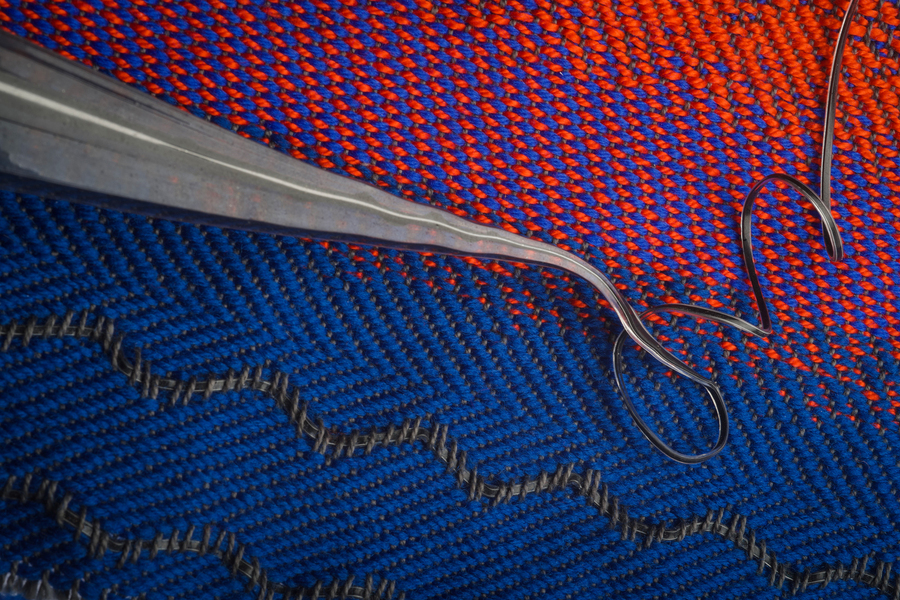Someday, our clothes may be able to listen in on the soundtrack of our lives, recording the sounds that surround and within us.
A novel fibre functions as a microphone, taking up sounds like conversation, rustling foliage, and chirping birds and converting them to electrical signals. Researchers write in Nature on March 16 that a substance woven into a cloth can hear handclaps and weak sounds, such as the wearer’s heartbeat. Fabrics like these could give a pleasant, nonintrusive — even attractive — approach to monitor physiological processes or enhance hearing.

According to Wei Yan, a materials scientist at Nanyang Technological University in Singapore, acoustic fabrics have been around for hundreds of years but are only used to suppress sound. Yan, who worked on the fabric while at MIT, describes it as a “completely distinct concept.”
The human eardrum inspired Yan and his colleagues. The cochlea converts sound waves into electrical signals by causing vibrations in the eardrum. “This eardrum turns out to be formed of fibres,” says Yoel Fink, an MIT materials expert. Collagen fibres radiate from the centre of the eardrum’s inner layers, while others create concentric rings. The crisscrossing filaments aid hearing and resemble the fabrics people weave, according to Fink.
Sound vibrates cloth at the nanoscale in a similar way to what happens in an eardrum. Cotton fibres and others from Twaron, a rigid polymer, easily transform incoming sound to vibrations in the new fabric. A single fibre containing a blend of piezoelectric materials, which produce a voltage when squeezed or bent, is woven together with these threads. The buckling and bending of the piezoelectric-containing fibre generates electrical impulses, which can be transferred via a tiny circuit board to a device that reads and records the voltage.
The team says that the fabric microphone is responsive to a wide range of noise levels, from a quiet library to noisy traffic, however they are still investigating what signal processing is required to separate target sounds from ambient noise. This sound-sensing fabric, when integrated into clothing, feels like conventional fabric, according to Yan. It also worked as a microphone after being washed ten times.
According to Vijay Thakur, a materials scientist at Scotland’s Rural College in Edinburgh who was not involved in this research, piezoelectric materials offer “great potential” for applications ranging from studying body function to monitoring the integrity of aviation materials. They’ve even been offered for energy generation, but he claims that the low voltages they produce limit many of its applications. The fibres in this fabric are formed by sandwiching a blend of piezoelectric materials between other components, including a flexible, stretchy outer material, which concentrates the energy from the vibrations into the piezoelectric layer, amplifying the signal it creates.
The researchers used the cloth to make a shirt that could hear the wearer’s heart like a stethoscope as a proof of concept. The fabric microphone might be used in this way to listen for murmurs and may one day be able to provide information akin to an echocardiogram, which is an ultrasound of the heart, according to Thakur. Placing such microphones in clothing, if it proves to be useful as a monitoring and diagnostic tool, could make it easier for doctors to track cardiac abnormalities in young children who have trouble staying still, he says.

Fabric microphones could also help with hearing and communication, according to the researchers. On the back of another shirt developed by the team, two piezoelectric fibres were separated apart. This shirt can detect the direction a clap came from based on when each fibre picked up the sound. The fabric mics may also output sound like a speaker when connected to a power source.
“We’ve been attempting to bring a new way of thinking about fabrics for the past 20 years,” Fink explains. Fabrics, in addition to offering beauty and comfort, may also aid in the resolution of technological issues. And, according to Fink, they may be able to beautify technology as well.





